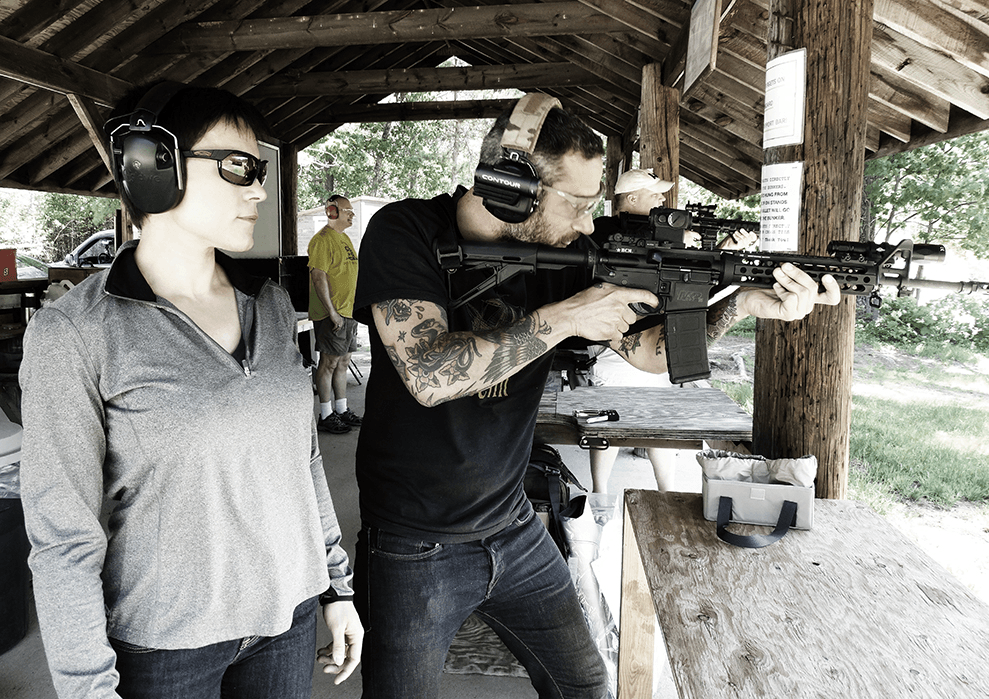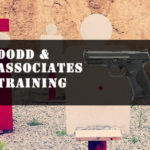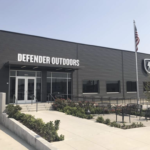
On The Range: Mars vs Venus
As originally published in American Shooting Journal
Story and photographs by Tatiana Whitlock

When it comes to who is the better shooter and why, men or women, the iconic Irving Berlin duet from Annie Get Your Gun immediately springs to mind. “Anything you can do I can do better! I can do anything better than you” is sung while Annie Oakley and Frank Butler prepare for the climactic sharpshooting contest in the classic Broadway musical. For an object as functionally gender-neutral as a gun, why is it that each of the sexes assumes they are better adept at mastering it? Any quality instructor will tell you the real weapon is not the gun. The educated mind that controls the gun possesses the real power. Therefore, do men and women learn and process information differently especially with a gun in hand?
“men are quick to act and apply aggression in a dynamic self-defense scenario”

Thanks to advances in neuroscience we now know that there are actual differences between the male and female brain. Studies have shown that men have more front-to-back connectivity within the brain’s hemispheres, suggesting they are more optimized for fine motor skills and compartmentalized learning. Women’s brains have more left-to-right connections between the hemispheres, leading scientists to believe they are more optimized for analytical and intuitive thinking. These brain patterns are not exclusive to men or women, but the average findings over the population as a whole.
There is still much uncharted territory when it comes to the human mind. The scientific community offers studies of both children and adults that prove more similarities between the sexes than there are differences at the biological level. Painting with a wide brush can lead dangerously down a path that reinforces gender-specific stereotypes and hinders learning down range. That being said, touching on some of the salient points that make men and women unique is worth investigating.
From an instructor’s perspective, new male shooters tend to learn better when introduced to a concept or technique by presenting the mechanics of the skill first and then putting that activity into context. Women tend to learn the same skill best when introduced to the context of when and why that particular skill is important and then taught the mechanics of putting it to use. The result is the same: the student learns both the action and the application, though from opposite perspectives. Both are fully capable of executing the skill set with precise fine and gross motor skills, regardless of gender, and put it to use when and where appropriate in the real world.
Processing Information
Male and female brains have a number of well-documented structural differences that illustrate how men and women process information. One major difference is in the grey and white matter of the brain and how the sexes use it all to process information. The female brain utilizes more white matter (the connective network that links the information and action processing centers of the brain) by a multiple of 10, and that may be why women are considered better at making social connections, observational connections and are better at multi-tasking than men. By contrast, men utilize seven times more gray matter (the information and action centers that are localized in different regions of the brain), which is largely why men are attributed with being good at task-focused activities, having tunnel vision or a “one-track mind.”
“Women often need to be taught how to tap into that aggressive and competitive part of themselves”

New firearm students offer the best opportunity to see these differences in action, especially in a high-stress environment like their first force-on-force class. Students often break down into two categories that display these brain behaviors without prejudice. Women can be observed as seeing and processing a wide range of critical information, yet they often hesitate to take specific action, while in a first-time force-on-force scenario men can be observed to identify one specific problem and focus intently on it missing other threats entirely. This isn’t to say that both aren’t guilty of making the same beginner mistakes, nor does it mean that these mistakes can’t be corrected with proper instruction.

Flipping the Chemical Switch
The male and female brain differ at a chemical level as well. Women produce more oxitocin and seratonin than men. These two chemicals are associated with an ability to be calmer and have more relationship and bonding behaviors. Men, on the other hand, produce more testosterone that is associated with varied levels of aggression and impulsiveness. Both men and women produce these neurochemicals, but to varying levels. The very nature of self- and home defense require a realistic preparation for an uncomfortable level of violence. Women are the largest growing demographic in the firearms community largely because of an interest in being able to protect themselves and the ones they love. The fact that they are taking ownership and personal responsibility for their safety rather than deferring to their male counterparts for protection proves that they are capable of flipping the chemical switch to face violence head on. Not only are women making the retail investment of the gun and the gear, but they’re also investing in their continued education on how to use them in context with their lives.
“Mankind has proven time and again that such defining traits are not exclusive to either sex”
Joining a firing line with a dozen bearded, molle-covered, tactical hipsters is out of the question for most women new to shooting. Women generally prefer to begin their journey into the world of firearms by training with other women. This birds-of-a-feather model is successful in part because it appeals to a woman’s inclination towards social interaction and community.

Men represent the predominant student population of run-and-gun, tactical-ninja, and gun-camp courses. These courses are generally physically intense, mentally taxing, and speak directly to understanding violence and how to counter it in kind. This isn’t to say that women don’t also enjoy the athleticism and aggressive nature of shoot house, force-on-force or vehicle close-quarter battle training, but it is typically not their initial launching point for learning. While men are quick to act and apply aggression in a dynamic self-defense scenario, they often need to be taught how to slow down and take in the details so they can take appropriate action. Women, by contrast, often need to be taught how to tap into that aggressive and competitive part of themselves to apply that same action.
Overview
Women produce more oxitocin and seratonin – two chemicals associated with the ability to be calmer and have more bonding behaviors – than men, while men produce more testosterone – which is associated with varied levels of aggression and impulsiveness – than women. Women generally prefer social groups and training with other women. National women’s groups have sprung up over the past decade such as The Well Armed Woman and A Girl With A Gun.

Mankind has proven time and again that such defining traits are not exclusive to either sex. We didn’t attain apex-predator status without a brain that made us adaptable problem-solvers. For all of the differences that have been observed between the male and female brain there is no evidence that one is more optimized for firearms use than the other. Having an understanding of these types of gender-specific tendencies helps instructors build curriculums and better communicate with students. A desire to learn and a commitment to personal development down range is the only differentiating factor between the Annie Oakleys, Frank Butlers and everyone else in the shooting world. The gun allows us a unique opportunity to meet at the firing line, cast off societal stereotypes and engage in friendly competition to prove just how alike we really are. ASJ
Firearms, guns, How women think, Mars vs Venus, Oxitocin, self defense, Seratonin, tactical, Tatiana Whitlock, Women and guns



























